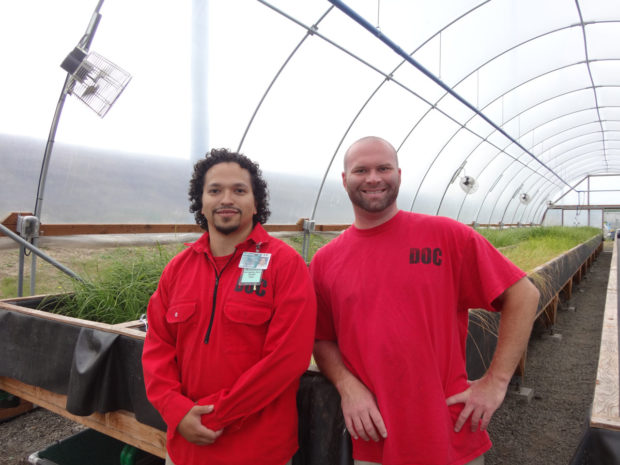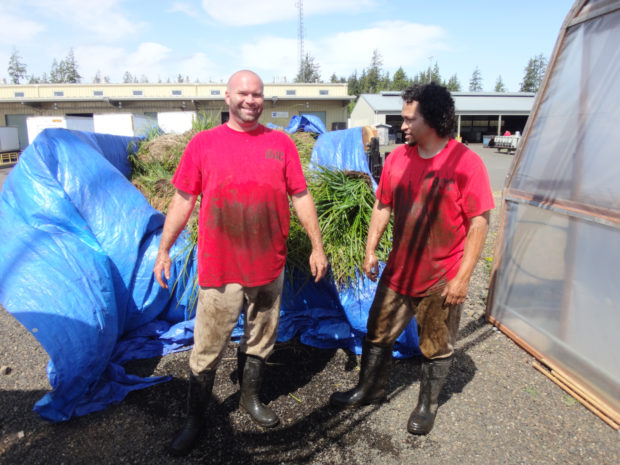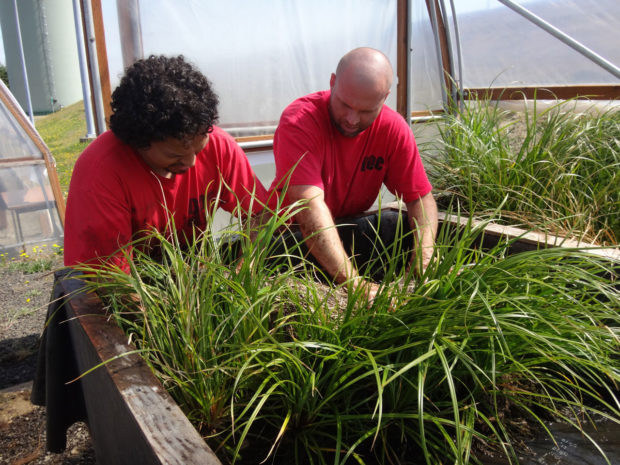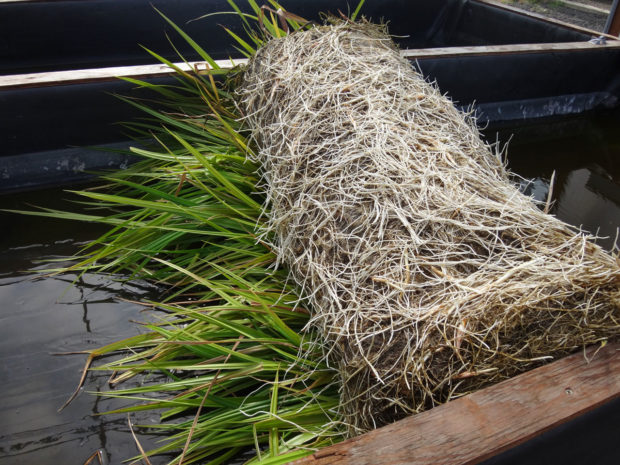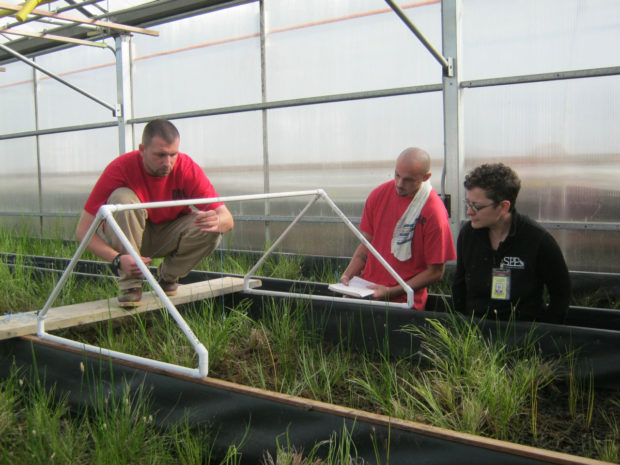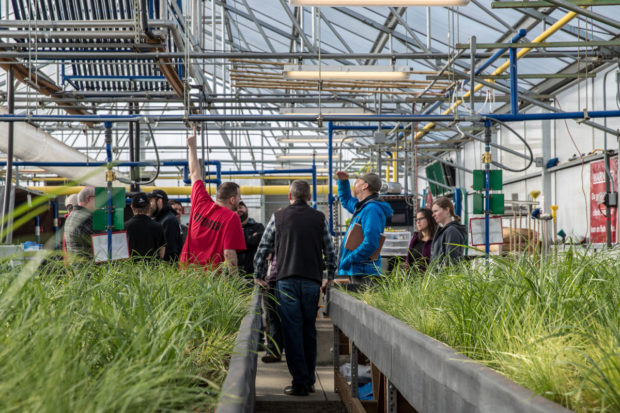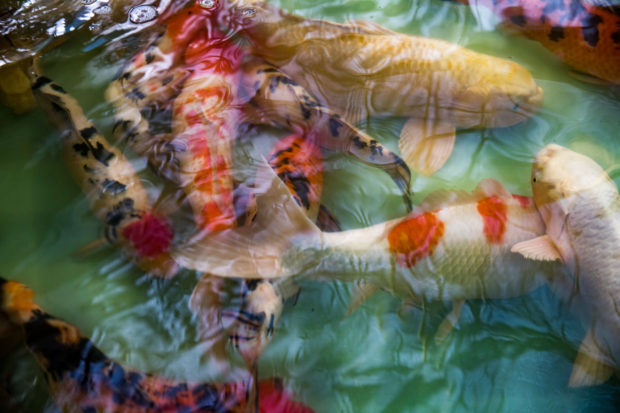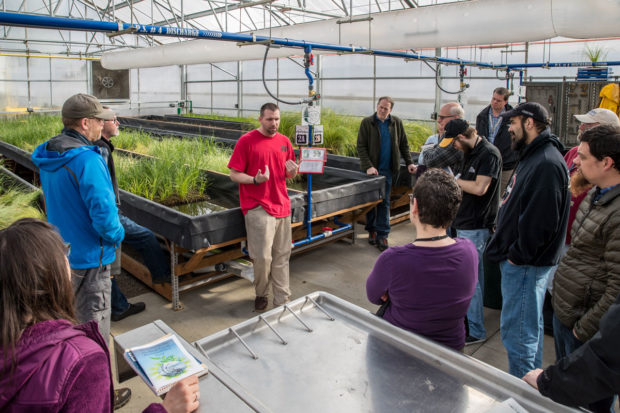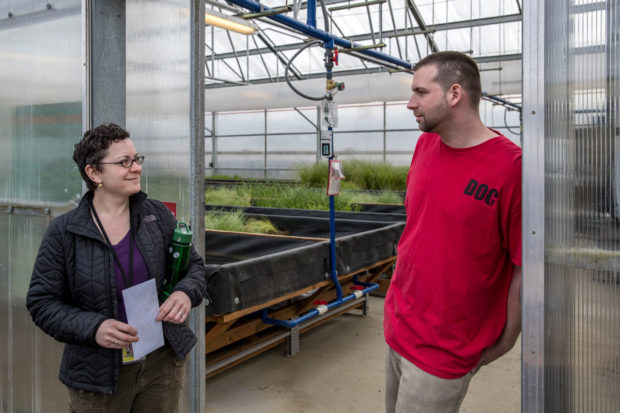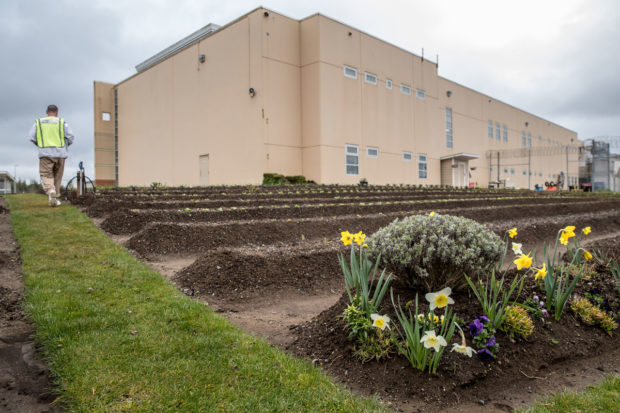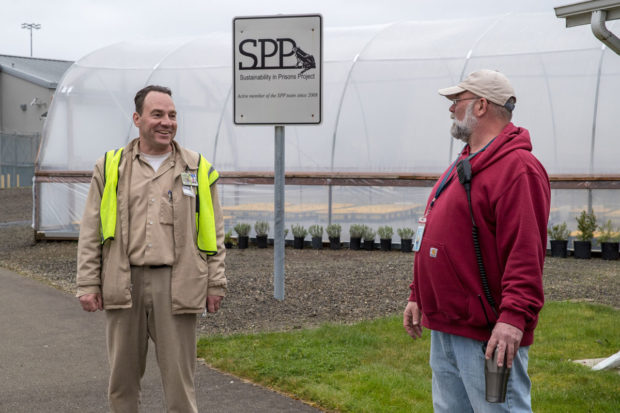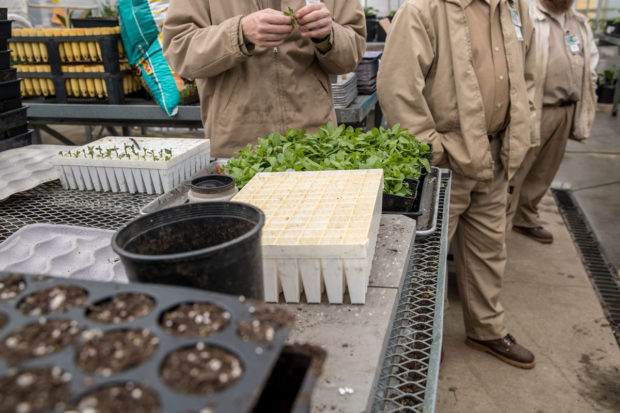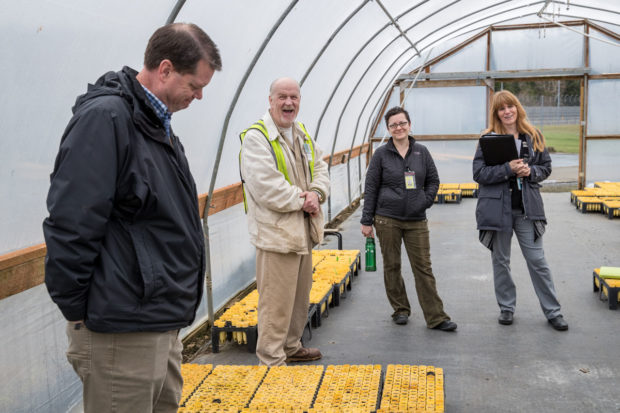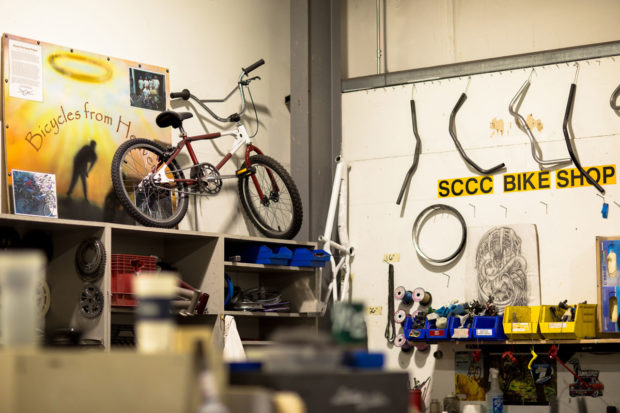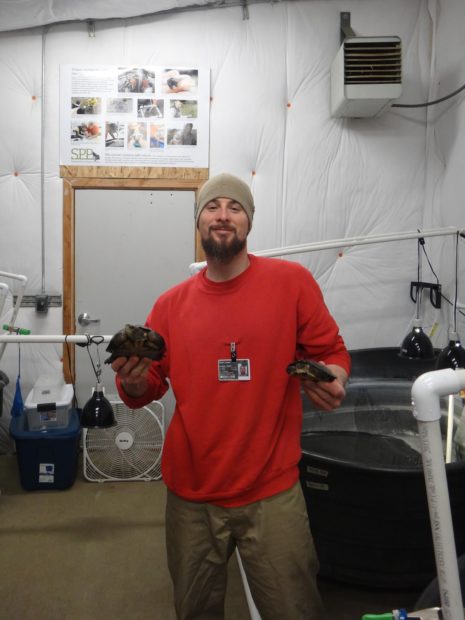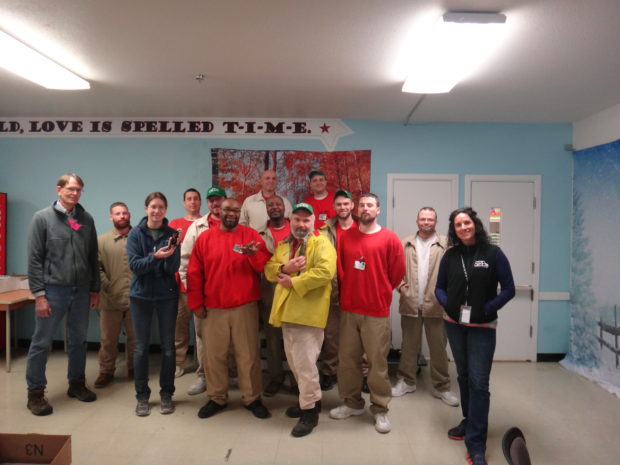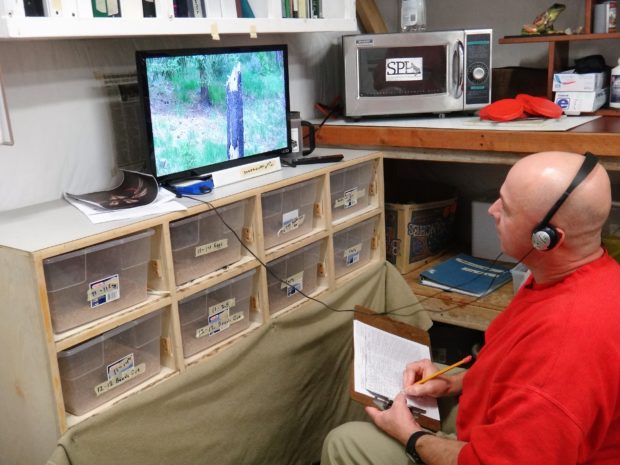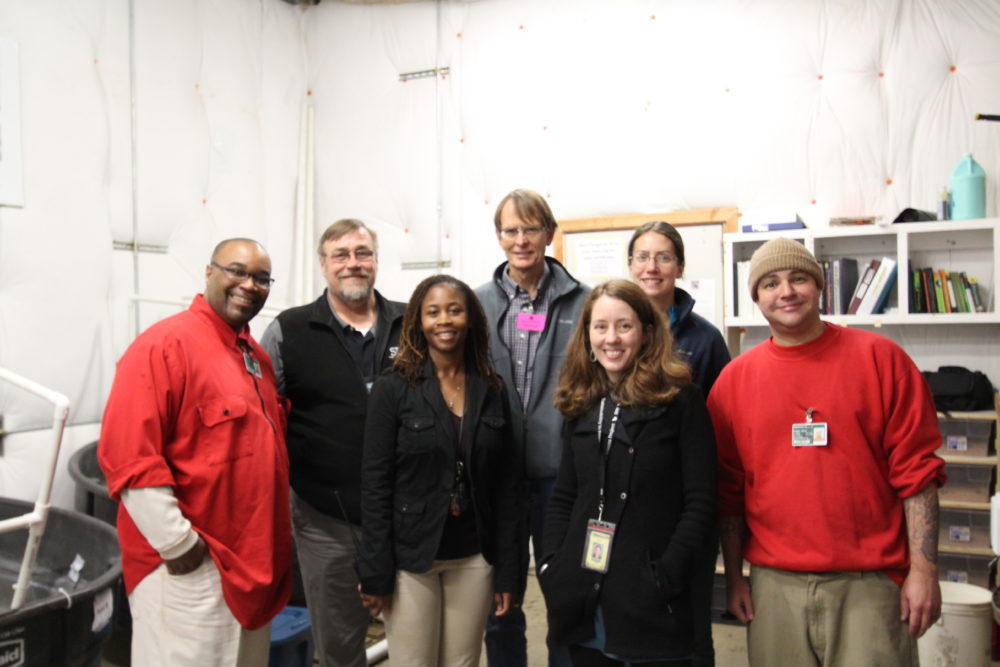By William Rathgeber, SPP Biological Science Technician. Photos by Marisa Pushee.
In early 2018, the Sustainability in Prison Project (SPP) partnered with Symbiotic Cycles to bring aquaponic gardening to Cedar Creek Corrections Center. I joined the program in spring of 2019 and I’m excited to be a part of this project because I view sustainability as a critical element of food security. This program exposes incarcerated individuals like myself to a new skill set required for maintaining alternative agriculture practices. I have also been excited to learn that this rapidly growing field is gaining momentum worldwide both as a backyard hobby and as a larger-scale means to harvest produce without tilling and weeding.

Aquaponic gardens can produce food naturally and organically with much less water than a conventional garden. Aquaponics is also more sustainable than traditional farming practices. The project comprises of an aquaculture system based on a symbiotic relationship between bacteria, plants, and fish in a closed ecosystem. The plants grow in a soil-free aquaculture and the plant roots clean the water for the fish while the fish provide nutrients for the plants. The plants and the fish work together so the water can be recycled indefinitely. Only evaporated water needs to be replenished.
Environmental, economic, and health concerns are excellent reasons to adopt an aquaponic garden. Aquaponic gardening offers a chance to reduce our carbon footprint because the produce being harvested doesn’t have to travel hundreds of miles to your grocery store. It also doesn’t add fertilizers that can pollute the local water reservoir or harm the local flora and fauna. Additionally, aquaponics is becoming popular among young and old locavores (people who buy local) concerned with nutrition, avoiding artificial additives, and protecting the environment.

In an increasingly environmental and sustainable focused world, these alternative agriculture practices prepare incarcerated individuals to have skill sets that will compete with the changing times. While incarcerated, we are not only educated in this alternative aquaculture practice but we get to provide the fruits of our labor to the kitchen for mainline meals. The Cedar Creek aquaponics system is supported by the design team at Symbiotic Cycles. They also provide consultation and informational on-site visits conducting hands-on question/answer seminars for Cedar Creek SPP Technicians and Centralia College Horticulture students.

























